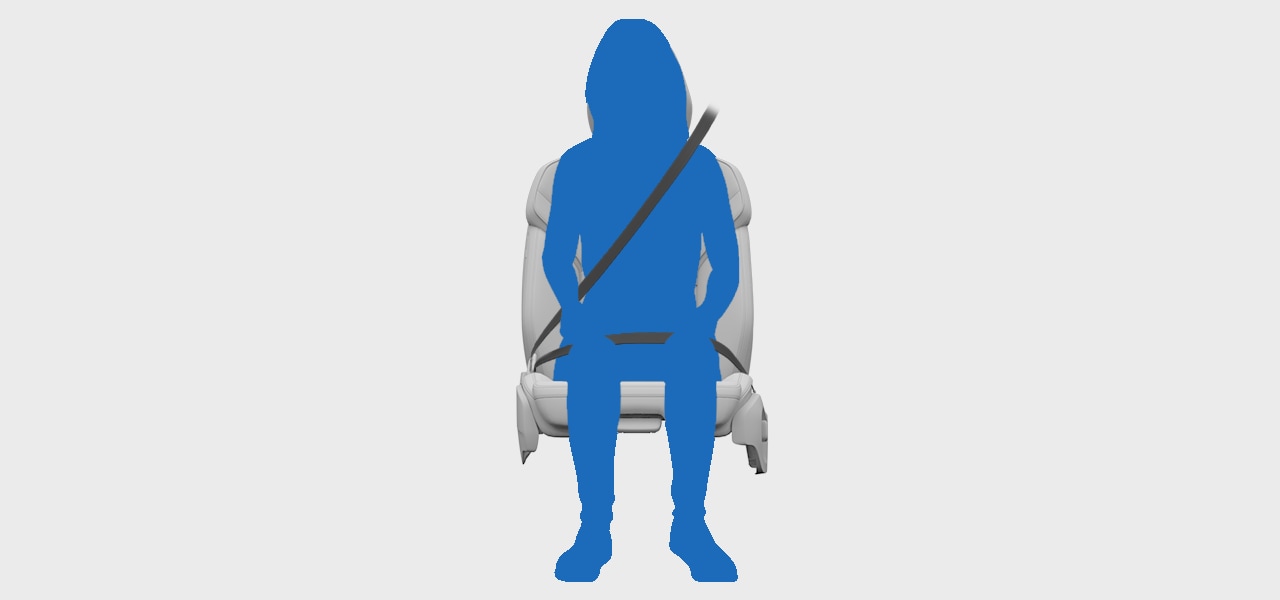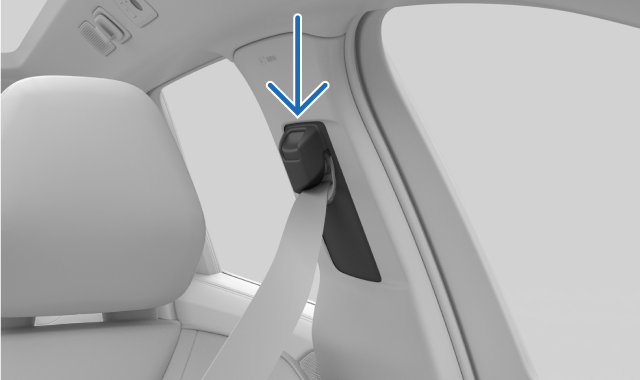
Note
These instructions apply to adults and children who are seated normally or are using a booster seat or booster cushion. Read the separate section covering child safety for detailed information about child seating and different types of child restraints.
Fastening the seat belt
Pull the seat belt out by the latch plate. If you pull too fast, the locking mechanism will engage.
While extended, check the belt for twists, knots or damage.
Insert the latch plate into the buckle.
The latch plate clicks into place.
Warning
Check when seat belt is fastened
- The seat belt should run directly and as straight as possible between its three anchor points. Any unnecessary slack increases the risk of injury.
- Make sure everyone in the vehicle is wearing their seat belt correctly.
- Use the correct buckle for each rear seat belt. Using the wrong buckle can lead to a seat belt malfunction or failure.
Adjusting the seat belt
For occupants in the front and outer second-row seats, adjust the height of the seat belt's upper attachment point.

- Hold the button on the upper attachment point down to allow it to slide up and down.
- Place it as high as possible without the belt touching the throat or neck.
Tension the hip strap to remove slack by pulling upwards on the diagonal chest strap. It should be as straight and low as possible, running below the abdomen.
Important
Pregnancy
Take extra care to follow all seating recommendations if the occupant is pregnant. Make sure that the seat belt does not cross the abdomen. The hip strap should be under the belly and the shoulder section should pass above it.
Releasing the seat belt
Release the seat belt by pressing the buckle button.
Guide the seat belt back to its retracted position.
Important
Make sure the seat belt retracts fully after using it. Closing a door with the seat belt caught in the gap can damage both the seat belt and the door.